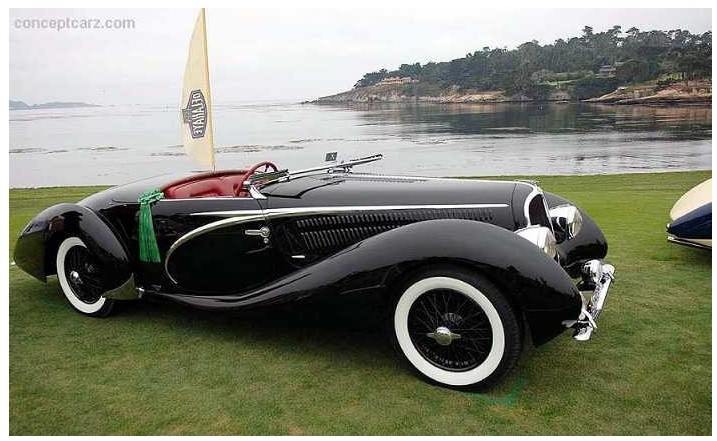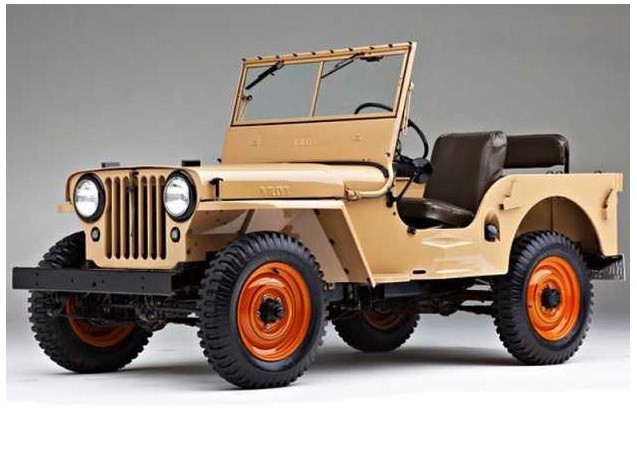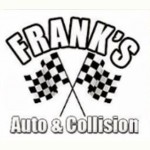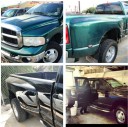Interesting Factoids About 1940's Automotive History
The 1940's were a tough time for the automotive industry due to the impact of World War II. Here at Frank's Automotive & Collision Center, we respect the history of automobiles in this country and throughout the world. By working on today's cars here in New Braunfels, TX, we realize that we too play a role in the ongoing legacy of vehicles on this planet.
 Although each decade in auto history is unique, the 1940's was undoubtedly one of the strangest in U.S. automobile history. No cars were made after 1942 due to the advent of World War II and car production for civilians did not re-start until 1946. Car factories were still busy, but now they were making war products, including anti-aircraft guns, aircraft engines, tanks, machine guns, Jeeps, combat cars, shells, helmets, and many other products that would eventually help the US and its allies to win the war.
Although each decade in auto history is unique, the 1940's was undoubtedly one of the strangest in U.S. automobile history. No cars were made after 1942 due to the advent of World War II and car production for civilians did not re-start until 1946. Car factories were still busy, but now they were making war products, including anti-aircraft guns, aircraft engines, tanks, machine guns, Jeeps, combat cars, shells, helmets, and many other products that would eventually help the US and its allies to win the war.
The early 1940's saw luxury cars for the first time and people flocked toward them for status and style. The Delahaye 135 convertible is a prime example of these new, higher-end vehicles, whose top speeds reached 95 mph also for the first time.
The war movement brought about a wide range of new vehicle designs to be used during the conflict. The department of war designed a 1/4-ton four-wheel drive military vehicle and named it the Jeep and the rest is, of course, history.
A brand-new vehicle back in the 1940's would set you back roughly $800—and for 18 cents, you could buy a gallon of gas. On average, most cars from this period got about 15-20 miles per gallon.
The 1940's also saw the establishment of Rolls-Royce's (now a subsidiary of BMW) renowned Crewe factory. BMW's most popular pre-World War II vehicle became the Type 328 Roadster, an agile two-seater that won more than 120 races on the motorsport circuit between 1936 and 1940. 
Finally in 1945, the war production board announced that civilian motor vehicles would start production starting in July. Reverting to peacetime production did not happen quickly. American carmakers produced fewer cars in 1945 (dealers sold just under 70,000 cars) than they had in 1909, before the arrival of mass production. Backlogged demand and little supply caused consumers to purchase anything they could find with four wheels. In the lucrative years following the war, independent car makers such as Nash and Studebaker captured a more significant market share than ever before.
As the car manufacturers stepped up and began making cars as quickly as they could, six million cars were made in 1950. During this explosive period, U.S. manufacturers kept making 1940's cars with new styling for when the war ended. Many substantial innovations in fender and roof lines were made in the late 1940's and much of them are still used today.
There is no question that the production of war machinery (including the Jeep) lead to a vigorous post-war economy in the late 1940's. Yes, it was surely a tough period in automotive history, but with all of the innovation that took place during this decade, automotive historians call the 1940's an "evolution revolution."
Sources: Wikipedia and AOL.com


![Frank's Automotive & Collision Center, located at New Braunfels, TX, postalcode], we have offices designated just for our insurance representatives Frank's Automotive & Collision Center, located at New Braunfels, TX, postalcode], we have offices designated just for our insurance representatives.](https://www.autobody-review.com/images/groups/776/128x128/5xN9OyHMrW4jFeNCNjsa.jpg)

![Frank's Automotive & Collision Center, New Braunfels, TX, 78130, we have a welcoming waiting room. Frank's Automotive & Collision Center], New Braunfels, TX, 78130, we have a welcoming waiting room.](https://www.autobody-review.com/images/groups/776/128x128/DhkQvfS5AuZqSNQkH2il.jpg)





 Although each decade in auto history is unique, the 1940's was undoubtedly one of the strangest in U.S. automobile history. No cars were made after 1942 due to the advent of World War II and car production for civilians did not re-start until 1946. Car factories were still busy, but now they were making war products, including anti-aircraft guns, aircraft engines, tanks, machine guns, Jeeps, combat cars, shells, helmets, and many other products that would eventually help the US and its allies to win the war.
Although each decade in auto history is unique, the 1940's was undoubtedly one of the strangest in U.S. automobile history. No cars were made after 1942 due to the advent of World War II and car production for civilians did not re-start until 1946. Car factories were still busy, but now they were making war products, including anti-aircraft guns, aircraft engines, tanks, machine guns, Jeeps, combat cars, shells, helmets, and many other products that would eventually help the US and its allies to win the war.
Social